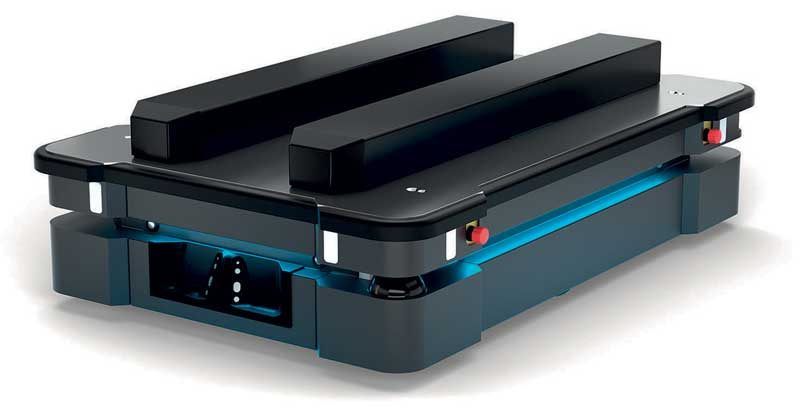A Brand New Idea of Intralogistics
The autonomous mobile robots (AMR) from the Danish company MiR, sold in Italy also by K.L.AI.N.robotics, have the undisguised ambition to revolutionize intralogistics, supporting operators and relieving them from repetitive and potentially harmful tasks. Fernando Fandiño Oliver, Area Sales Manager Southern Europe and Brazil, tells us why these robots are particularly suited to Italian manufacturing companies.
di Giorgia Stella
“The future is now”, says Fernando Fandiño Oliver, MiR Area Sales Manager Southern Europe and Brazil, almost at the end of the chat he gave us during a recent visit to Italy, in response to those who think that technologies like autonomous mobile robotics deal with the future rather than with the current manufacturing environments. Due to their characteristics (open interface, ability to carry heavy loads, simple programming, safe navigation), intralogistics can be automated simply and effectively.
Do not call them AGVs
“The MiR simply is not an AGV – says Fandiño Oliver -. In order to go from point A to point B, the robot does not need a guide but can calculate itself the best route. Moreover, these robots are able to move in fleets taking into consideration the position of the other robots. Above all, it is always possible to communicate with the robots and change the mapping of the environment”. The MiR manages to move knowing the company perimeter. The system learns the room layout, including fixed obstacles (walls, production machines, etc.) or non-fixed ones, such as pallets, for example. The programming works by simply inserting the starting point and the arrival point. As already said, the best route is chosen by the robot, which is able – thanks to the integrated cameras and scanners – to get around any obstacles, including people, that it encounters along the way.
Payload up to 500 kg
Currently, the MiR range includes models with 100, 200 and 500 kg (the newest one, see box) payloads. These can, by their characteristics, cohabit with the operators. It is also possible to mount a hook on the robot to move heavier loads on a trolley.
“MiR robots take care of a series of difficult transport tasks that are potentially harmful to human beings, thanks to a wide range of customizable modules that can easily be installed directly on robots”, continues Mr Fandiño Oliver. “In addition, they can enter prohibitive environments for human beings, for example due to loud noises or harmful substances. By replacing people in carrying out repetitive transport tasks, robots make people have more time for other tasks and help creating jobs, as companies will need more people working together with robots”.
Making collaborative robots mobile
A particularly interesting use of MiRs is the one with collaborative robotic arms, more and more widespread on the market. In this case, automation is convenient especially in applications involving repetitive processes. “We have already installed several applications that integrate mobile and collaborative robots – explains MiR Area Sales Manager – also in Southern Europe. Our products may adapt to robots from several manufacturers and are an additional option. The key concept, in my opinion, is the flexibility of production, a requirement that the market expresses in an increasingly overwhelming way”. We also ask Fernando Fandiño Oliver for his opinion on the applicability of this technology in the Italian industrial fabric, clearly featured by the presence of many SMEs. “In Italy we see a lot of interest in mobile robotics and we see great flexibility by entrepreneurs and managers, especially, but not only, the youngest ones. MiRs are designed to move even in tight spaces and become even more interesting when people are few and can then perform tasks with higher added value than pushing a cart”.

